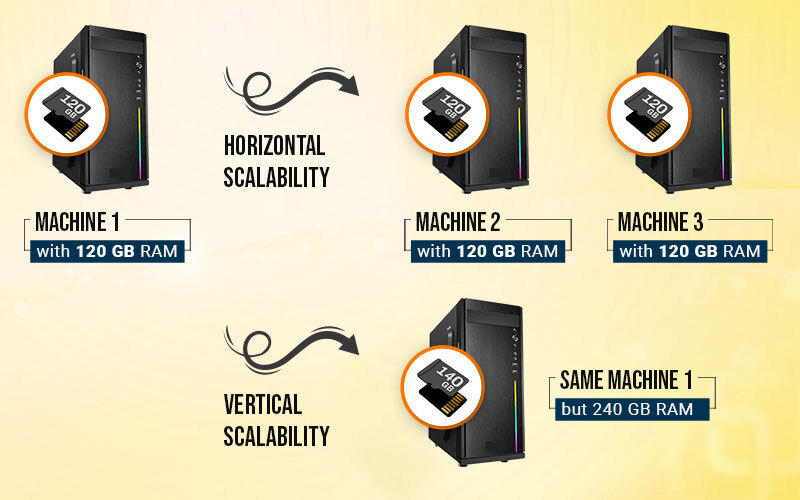
Scaling Up for Success: Secrets of Highly Scalable Web Apps
The scalability of the web applications guarantees the application's capacity to be scaled up whenever required, i.e., to sustain an increased user base when needed. Why would a business start-up like yours need it now? Well! Here's a read!
Suppose you are building an application for your project but have only a few customers now. After a few months of working on feedback for your project, you will have a product that your customers want. And from then on, your applications will draw more customers' attention. Your business will start generating good revenue. More customers will begin interacting with your business. It will increase the RPM (Requests per minute) on your application.
And Boom! Beyond that point, no one will be able to use it. What a tragic end to your business story! You would not want that, right? Then think of scalable web apps. For this, apps must be correctly configured during the development cycle.
How Does Scalability Work?
Scalability refers to the system's elasticity to change with demand without compromising performance. Scaling the web app will require a combination of adjustments to the system's hardware and software. It includes adjustments to network bandwidth, processing units, and memory requirements (cache and hard disk). The aim is to meet many requests per minute (RPM) by aligning hardware add-ons with the software protocols.

Three types of scalability options are available: Vertical scalability, horizontal scalability, and diagonal scalability.
Horizontal scalability
Also known as the "scaling out" option, this refers to adding additional nodes or machines to your infrastructure to meet user requirements.
Vertical scalability
Also known as the "scaling up" option, this refers to adding additional power in processing, memory, or so on to your current machines to meet user requirements.
Diagonal scalability
The combination of vertical and horizontal scaling is called diagonal scalability.
Steps To Build a Scalable Web Application Architecture
Now that you have understood the basics of scalability and why you should choose a scalable web application, let us go through the building steps.
Get an Idea About Future Expectations
It is important to be sure that your expectations for scaling justify the expenses. Don't boost yourself based on your daydreams; verify them using statistical data. Check if your web application supports your growth strategy. Find out about the increase in the number of users each week. Draft the chart of application users against the time frame. Based on the calculation, you can justify the scalability requirements for web applications.
Check Metrics for Scalability
Now that you have decided to build a scalable web application, here are four key metrics you can work on.
- Memory: It refers to the amount of RAM that a system can use at a time
- CPU: It refers to the processing power of the system.
- Network I/O: It refers to the time spent sending data packets from one process to another.
- Disc I/O: It refers to all the operations that happen on a physical disk that are read-in, read-out, write-in, and write-out.
Pick up the metrics that you need to focus on for scalability.
Choose An Architecture Plan for Scalability
Choosing the right scalable web application architecture is one of the most important steps in application scalability. There are two main architecture patterns for scalable web applications:
- Monolithic Architecture
In monolithic architecture, an app is built as a unified unit that uses a single codebase. It is self-contained and independent of other applications. The architecture suits small, scalable web apps best.
- Microservices Architecture
An app is built as a collection of services in a microservices architecture. Each service has its own codebase with its own logic and database. Each one of them performs a specific function. It usually suits big organizations' scalable web applications.
Choose the Correct Database for Scalable Web Applications
You should choose the database based on the type of data you have to store. For example, you can pick a relational database to store data in tables (rows and columns) for your application. You can later establish links between these tables. Or you can pick an unstructured database without predefined data models.
No matter what database you choose, it should be easy to integrate with your web application.
Choose the Right Framework for Scalability
Pick a framework for your scalable web application based on the development language of the app. For example, Django and Ruby on Rails are great options.
Testing
You must ensure proper app load and performance testing to ensure smooth development. For this, you should correctly simulate the environment, users, and data that your web application might encounter and test its reliability. You can also choose test-driven Development (TDD), which leverages the iterative development approach.
Tips and Tricks to Note Down While Working on Scalability
- You should always prefer clean code design for the scalability of the application.
- You can check for the smooth performance of the app by load testing. It will help you overcome the weak areas of your app.
- Select third-party services carefully so that they don't interrupt the app's functioning.
- Hardware influences the scalability of web applications; hence, you should choose it thoroughly.
- Building scalable web applications can be tricky and require expert hands. For best results, hire a web development company to save you from the hustle and bustle of the task.
Conclusion
If you talk about modern-day apps, scalability is important. The cloud architecture of the web app must be designed in such a way that it can scale with the increasing load and users. No business should harm its brand image with service disruptions. Scalable web application architecture helps you deliver a great experience to your users, no matter how many they are.





